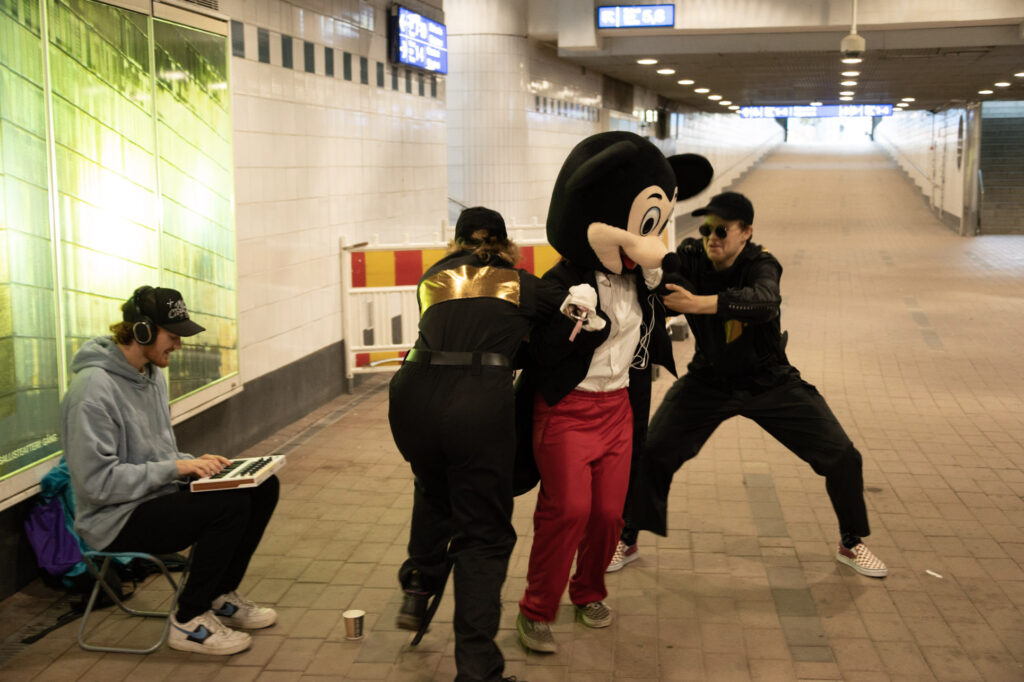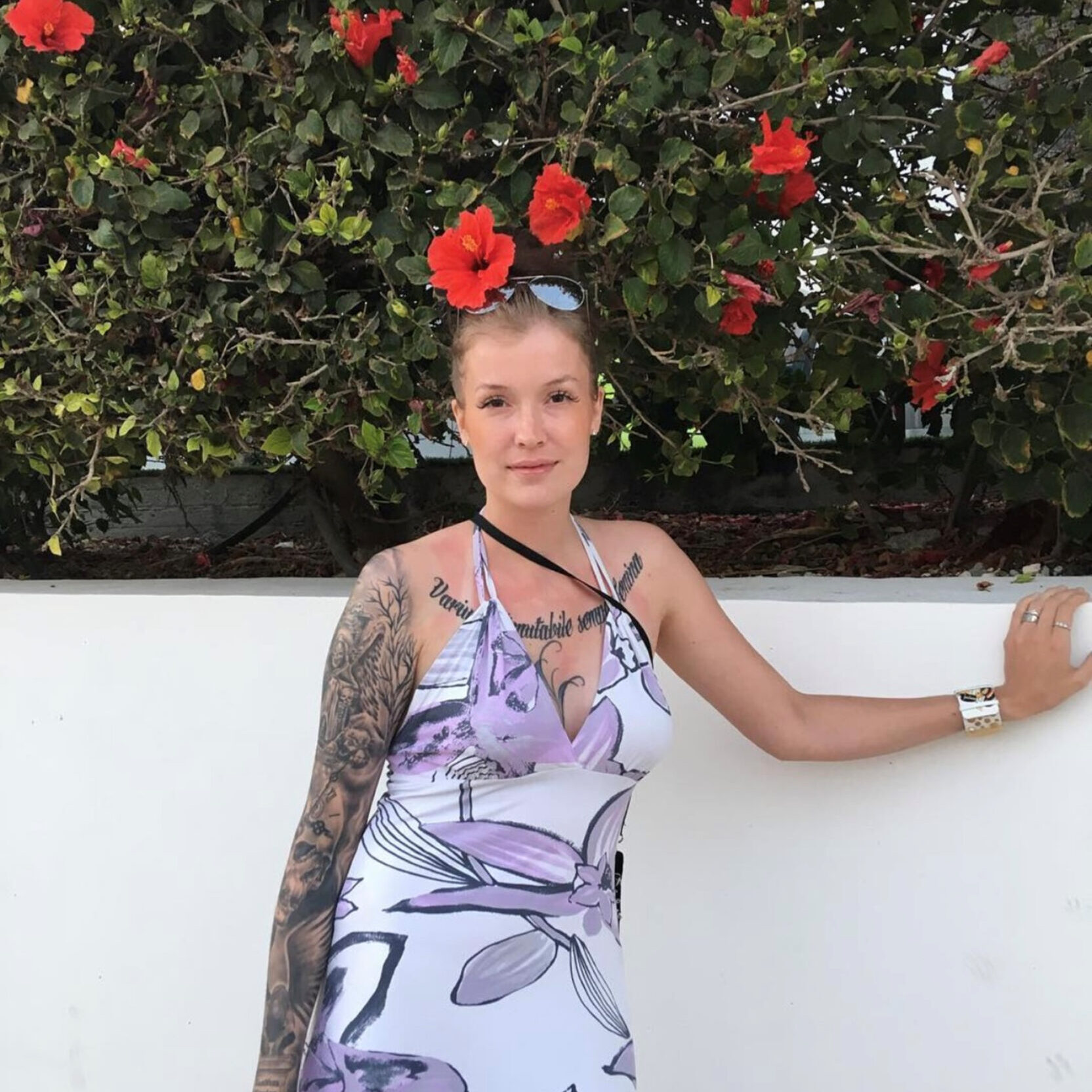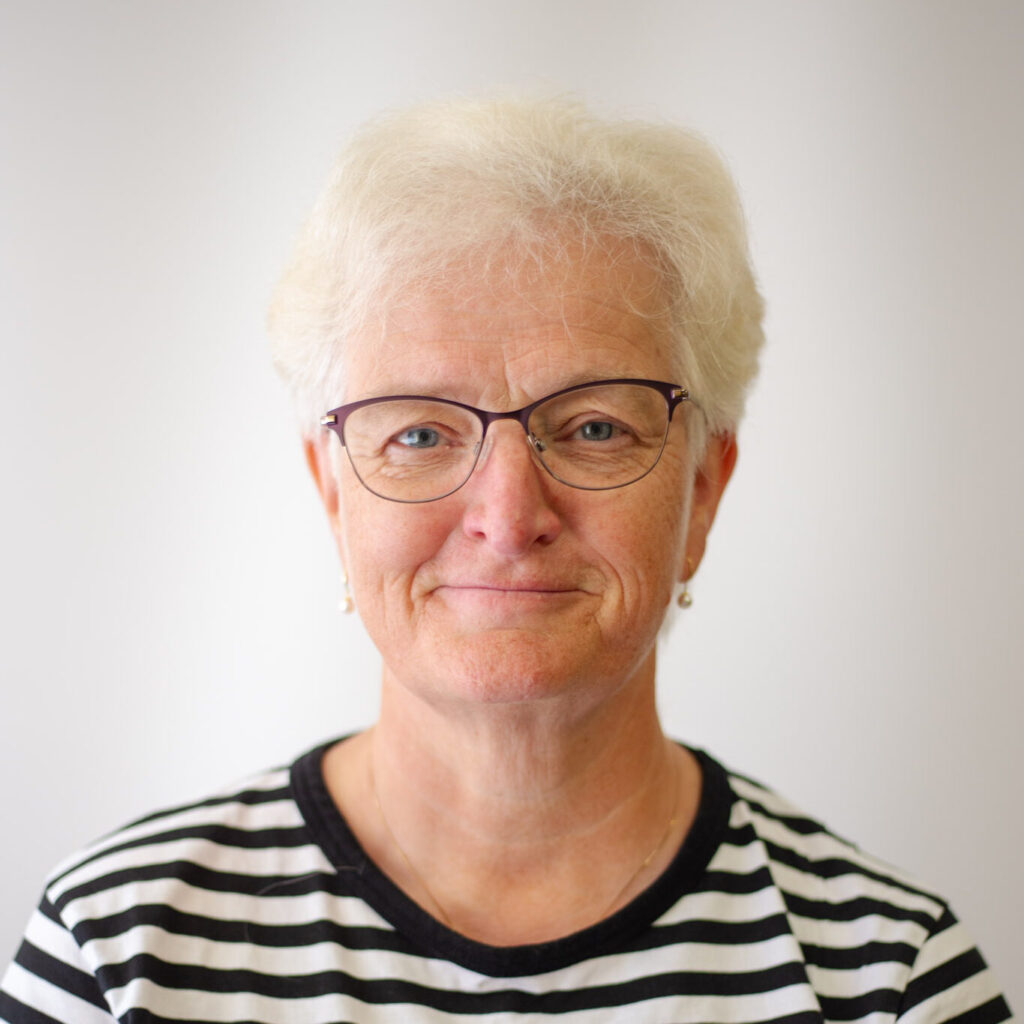Exploring How and Why Young People Roam Around in the City Space
A joint production by the Finnish National Theatre and the Finnish Youth Research Society
A group of 11 young volunteer actors with the help of Kantti theatre professionals arranged 11 performances in Helsinki city centre in autumn 2022. The young actors played the role of city guides, helping audiences see public space through the eyes of young people and showing them how young people use the space. 40 participants at a time were guided around the central railway station and the underground tunnels beneath it. As they followed the guides, audiences wore headphones and listened to audio inserts. The production dealt with young people’s experiences of urban space and the threats and fears of both young people and adults. Who should be afraid of what?

Art performance as part of a youth research project
The Finnish Youth Research Society gathered a group of researchers in 2020 as a result of public concern about youth forming gangs and loitering around public spaces. A leading newspaper wrote at the time: “More than a hundred potentially dangerous young people are now moving in groups in the city center of Helsinki” HS 10.1.2020. Researchers gathered information and statistics while also interviewing young people, to gain a better understanding of what was going on. The researchers ended up suggesting a series of artistic interventions to explore the phenomenon. The first performance was GÄNG, produced in co-operation with the Finnish National Theatre. It can be described as performance theatre combining physical and digital environments.
The project was mostly carried out by a hard-working group of young volunteers. The production team was also joined by Tiuku ry, The Performance Arts Centre and G SongLab, and consisted of designers, researchers, young performers and the staff of the National Theatre.
The content was created around the hierarchies and power relations that young people face in the city. The production team went through the research material and started work on the manuscript. A call for actors was also organized, through which most of the young performers were selected. The young people participated in four workshops, after which they rehearsed for a month before the actual performances. Although the concept and script were almost ready at the beginning of the training period, content was also created with the young people during rehearsals. Special effort was made to come up with a presentation combining the stage and a digital platform. The research had shown that social media platforms constitute a second level of space for young people to hang out alongside physical spaces. The map features, in particular, of applications such as Snapchat or WhatsApp make it possible to share locations and routes and enable young people to form groups and to meet up ad-hoc. These applications make it possible to send alerts and invitations to gather in a spot. Stage director Joel Teixeira Neves describes the performance as site specific. This means that the performance could not be presented in any other place and that the content and context manifested in this specific place.
The workshops provided significant training for the young actors. There were extensive discussions and preparation ahead of the performances. In a public setting, interactions with passersby can change the atmosphere and the whole performance. The workshops included acting exercises and city tours. Staging the performance in an urban environment meant that there were many details to consider: the chaotic nature of the urban space was always present, and it was necessary to think about what other things could happen in urban spaces parallel to the performance.

Youngsters forming digital tribes and being city nomads
Digitality was emphasized and a variety of digital tools were used. During the performance, the actors communicated via WhatsApp, enabling them to arrive at the scene at the right time. During the performance, the 40 headphones were connected to a transmitter playing prerecorded audio from the guide’s mobile phone. Audiences could hear parts of a discussion about how the city looks through the eyes of young people as well as other pre-recorded narratives, music, sounds and songs. The group stopped to watch or take part in several scenes as the tour proceeded. The performances made visible many situations young people encounter in their everyday lives in urban areas, such as being denied access to spaces or being confronted by authorities like security and police.
The script of the performance included excerpts of research findings like: “Young people hang out in the city alone or in groups in an effort to strengthen the internal cohesion of their own group and to meet groups of other young people. For many young people their free time is also digitally and geographically intertwined with certain places. Digital devices are the most significant factor that has changed the way young people hang out. Young people monitor the physical location and digital activity of their most important friends in various applications, sometimes secretly.” Diggiloo participants had the opportunity to listen to these audio excerpts in an interview with Joel Teixeira Neves and a presentation he gave to help us understand the content of the performance.
The guided tour started at the central railway station with the performers and the audience meeting. It was especially important to highlight how to follow safe space guidelines for those outside the show who may not be aware of them. Performers then distributed headphones to the audience with instructions on how to use them, so the tour could begin. The performances were enhanced with audio from the headsets. The final part of the guided tour was a concert night, with performances by the actors and young people from the G SongLab workshop.

The performance sought to make an impact: to draw constructive and positive attention to the youth culture of hanging out in public spaces, to bring about changes in attitudes and to tackle the root causes of distress. The young people who congregate in railway stations and elsewhere mostly need a space to gather and meet friends. Researchers were tasked with evaluating the results of the performance and surveys were given to the audience to collect feedback. The performance generated considerable attention both during rehearsals and during the performances themselves. GÄNG received national press coverage and the material was recorded and will be evaluated by the researchers.
It is very important to spark a conversation around important youth issues. Young people’s concerns should be addressed so that they are able to participate in the change. It is important that we recognise, highlight and understand the issues young people face before the situation gets out of hand.

This article was originally written based on an interview with director Joel Teixeira Neves by Nina Arki, a student at Humak.

The article was further complemented with material from a presentation by Neves and edited by Susanna Pitkänen who works as a lecturer at Humak.
Link to the recorded presentation by Joel Teixeira Neves: GÄNG
Other links:
Finnish Youth Research Society
Finnish National Theatre, GÄNG








